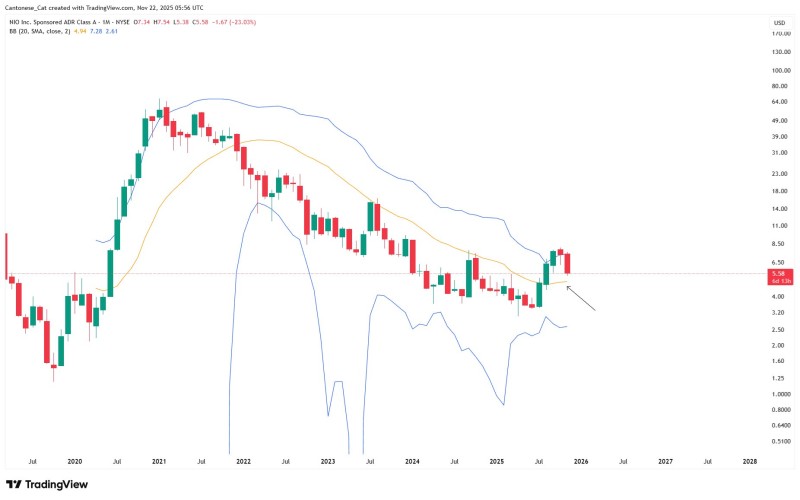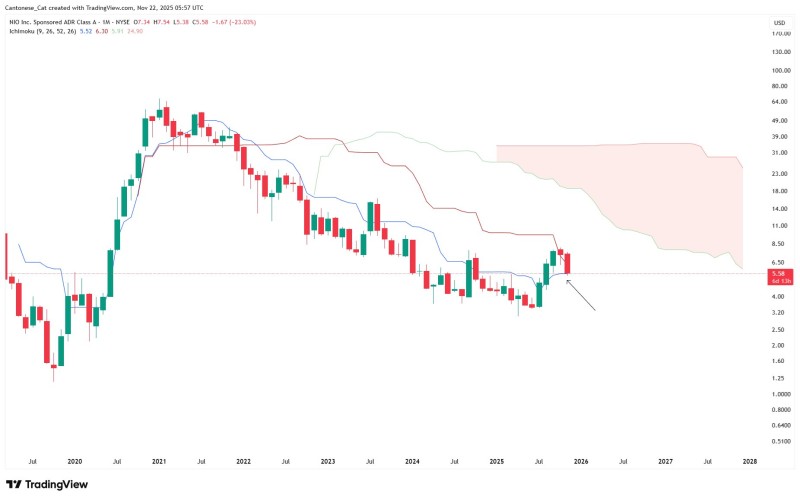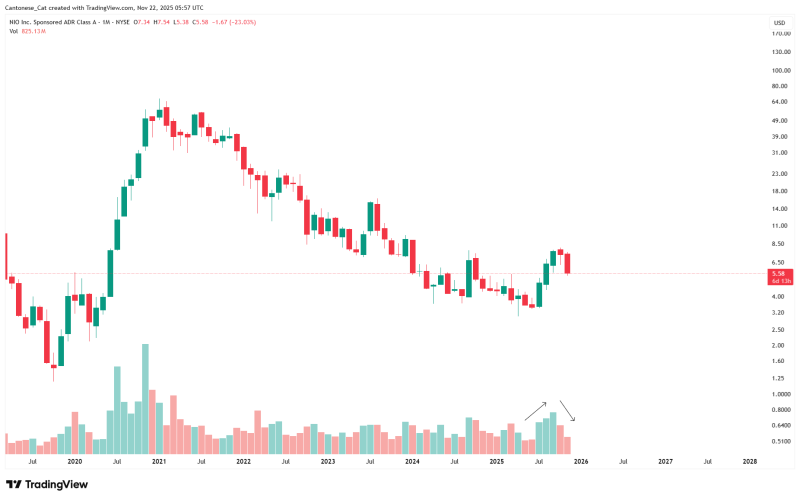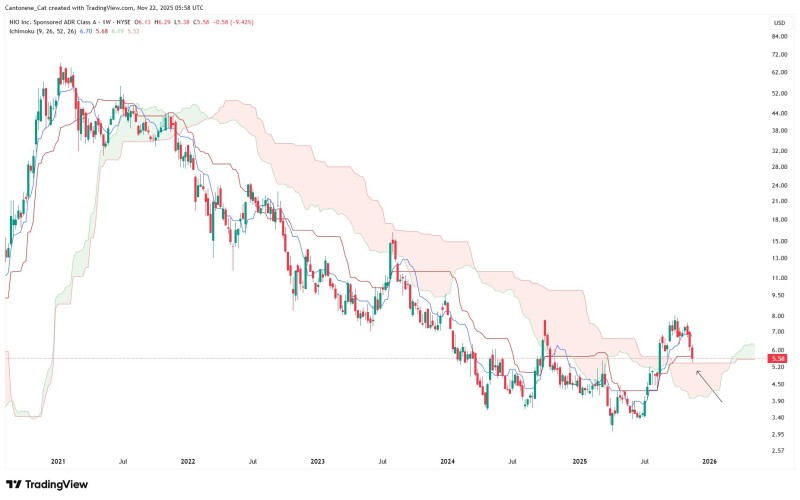⬤ NIO is making a major technical move after pushing through several resistance levels that held it back for years. The 20-month simple moving average, which kept the price down for a long time, has now switched to support. Currently trading around $5.58 on the monthly chart after a recent dip, the stock's overall setup looks much better than the multi-year decline that came before.

⬤ The monthly chart shows NIO has decisively broken above its 20-month SMA for the first time in several years. Bollinger Bands are tightening up as price moves away from the lower band, hinting at early stabilization. Monthly Ichimoku indicators back this up, with the Tenkan-sen sitting below current price and working as support. These changes point to strengthening momentum on longer timeframes.

⬤ Weekly Ichimoku signals add more confirmation to the bullish case. Price has punched through the weekly cloud, which blocked upside movement for roughly three and a half years. After breaking through, NIO pulled back to retest the cloud and held that level cleanly. This shift marks the first time in years the cloud is providing support instead of resistance.

⬤ Volume patterns support the technical improvement. Monthly volume data shows increased activity during NIO's recent rally, followed by lighter trading during the pullback—a pattern that typically signals early accumulation. Weekly volume shows the same thing, with strong buying interest on upward moves and declining volume during pullbacks. This healthy volume behavior strengthens the overall technical picture.

⬤ This combination of technical factors matters because when multi-year resistance zones flip to support, they often mark important turning points in extended market cycles. When major moving averages, Ichimoku signals, and volume trends all shift together across monthly and weekly timeframes, it tends to influence broader market expectations. With NIO now holding above these reclaimed support levels, the next moves will show whether this structural improvement can set up a more sustained trend reversal.
 Saad Ullah
Saad Ullah

 Saad Ullah
Saad Ullah


